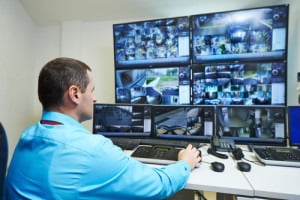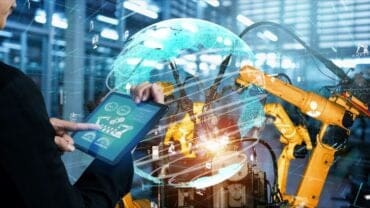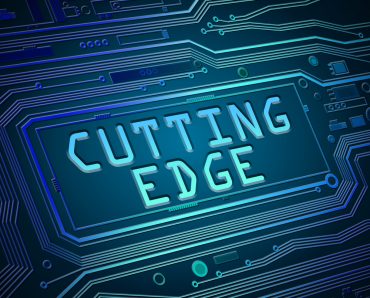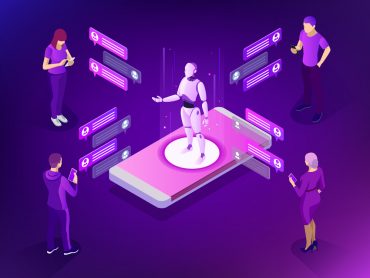
With enormous amounts of insights for retail and asset management locked up in captured video data, expect it to attract execs’ attention.
Remember the days when looking for something on security camera footage meant having someone sit in front of a screen, eyeballing hours of grainy black-and-white images? Actually, that wasn’t too long ago, and many companies or facilities still have such systems. However, things are changing fast.
IoT data may be piling up, but none at a faster rate than video data streaming in from cameras and visual sensors now seen at every locale and in every enterprise across the planet. Not too long ago, cameras where delivering images on tape that only could be searched and viewed manually, inch by inch. Now. computing power makes such imagery available for viewing and analysis in real time.
This is the focus of the latest news to come out of Dell Technologies’ Edge and IoT Solutions Division, which announced a series of initiatives intended to boost the power of computer vision, enabled by the combination of imaging sensors and machine intelligence.
In doing so, Dell seeks to address the most pressing problem companies are running up against with computer vision — storing and managing massive video data sets. Cameras provide rich information about the physical world, but the deluge of video data creates too much data for humans to cost-effectively monitor for real-time decision making. “Not too long ago, standard-definition cameras were the standard, now today high-definition cameras are the standard, even becoming surpassed by 4k and even 10k cameras,” says Ken Mills, general manager of surveillance and security for Dell. “This transition is causing a dramatic change in the infrastructure required to support this advanced applications, and open up opportunities to integrate with other applications like IoT and analytics.”
See also: Privacy is holding up many smart city projects
Use cases for intelligent computer vision extend across just about every industry, Mills says. “We’re not just seeing this in government implementations, we’re seeing this across higher education, campuses, healthcare, safe cities, stadiums, airports, digital evidence. Every vertical, every customer segment, is dealing with this transition from point solutions in the surveillance to enterprise-class data-ready solutions.”
When analytics and artificial intelligence are applied to video data streams, powerful, actionable insights can be automatically delivered. Events driven by computer vision can be analyzed together with telemetry from machines – including data that imaging sensors cannot provide, such as voltage, current, and pressure.
There are four trends converging that are driving the computer vision market, Mills explains:
- IT transformation: This is the main driver of visual analytics, Mills says. “More cameras, more resolution, more retention, more everything is driving new architecture requirements. Your old system that you had yesterday is not going to work tomorrow.”
- Digital transformation: This is a trend changing business models as well as technologies. Digital transformation “is occurring in a big way around computer vision, AI, and other data management and data integration opportunities.”
- Workforce transformation: This is also happening in a big way. “Not only do you need the right storage platform in the data center, you also need the right endpoint to be able to watch and display and search that video in a real-time fashion, and get to what you want to get to as fast as possible with all that new video. so you no longer can use low-end PC desktops, you have to use high-performing endpoints to be able to watch the video.”
- Security: “Making sure the cameras are protected, from the edge to the core of the cloud, and that not only are we protective the video as it lands on the hard drive, but were protecting the endpoint all the way out to the customers edge of the network with solutions like VMware pulse IoT center.”
Video Data “Top of Mind” for Execs’ IoT Plans
Dell’s solutions include hardware and software engineered to work together to support computer vision and machine intelligence. The newly released Dell Technologies IoT Solution for Surveillance is designed to speed time to realize return on investment. By enabling computer vision with Dell Technologies IoT solutions, customers can more accurately, efficiently and effectively see relevant information pertaining to areas such as public safety, customer experience, and product inventory and quality. Surveillance is the first use case to which Dell Technologies has applied computer vision.
The ability to not just manage, but take advantage of the gigabytes’ and petabytes’ worth of video data now coming in from cameras and video sensors, is top of mind for many executives seeking IoT capabilities, Mills relates.”We asked them what keeps them up at night? And they came back with this transitional camera solution we’re talking about, they came back with this increasing quantity of cameras they’re dealing with, they came back with the increase in storage requirements and overall retention times where a lot of cities, countries, jurisdictions are requiring at least a year of storage, and we have some countries requiring at least three years of storage. We even have several implementations and many more coming that require 20 years and even lifetime storage retention requirements. So there’s a dramatic shift in the amount of storage and compute power required to support these applications.”
Another area of interest is integrating IoT sensors, from biological sensors to ‘panic’ sensors, with surveillance footage, Mills adds. “Over the past couple of years, we’ve seen customers really trying to figure out how to integrate computer vision and AI into their platform. so it’s no longer kind of old video-based analytics, it’s through computer-based data center-class analytics solutions that customers are looking for. Whether its retailers analyzing traffic flows, or safe cities looking for people doing things they shouldn’t be, or facial recognition or some combination of all the above. Customers are looking to not only integrate IoT but take advantage of computer vision and AI.”




























